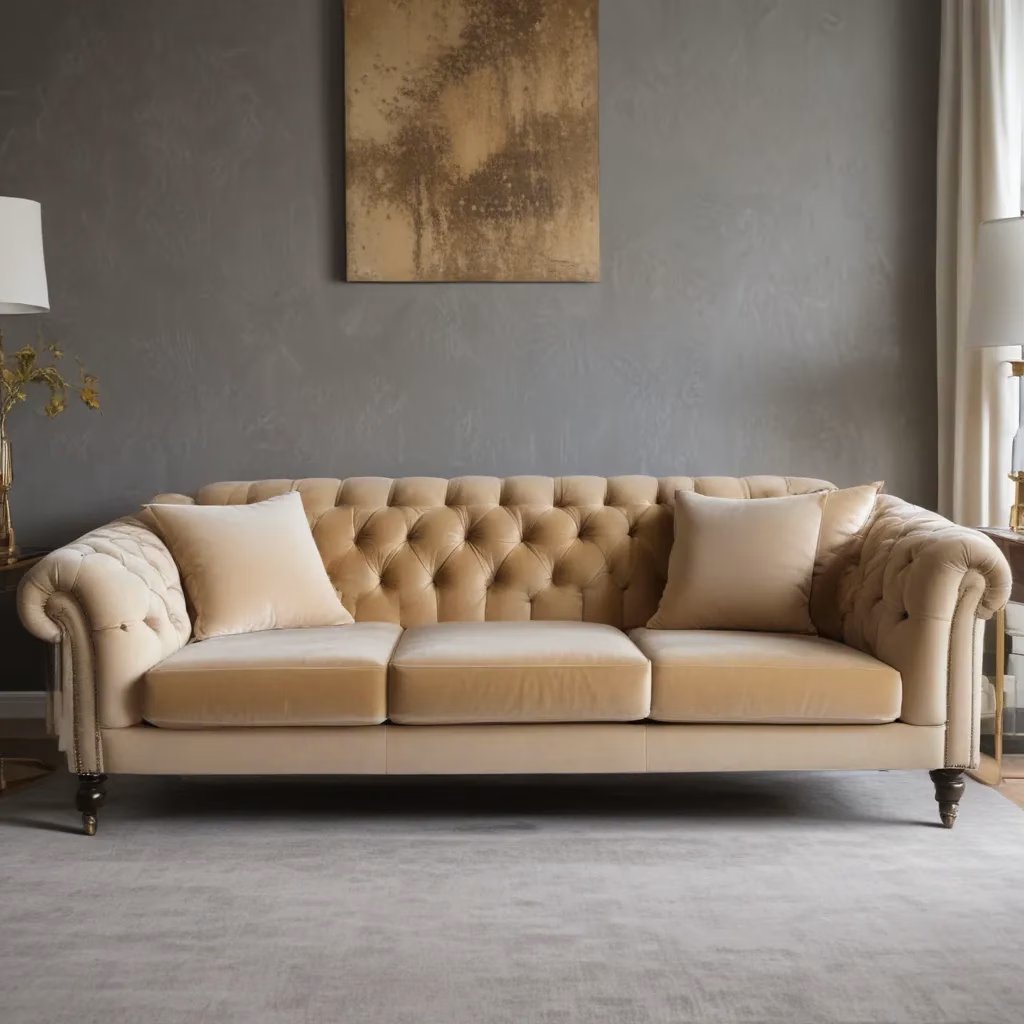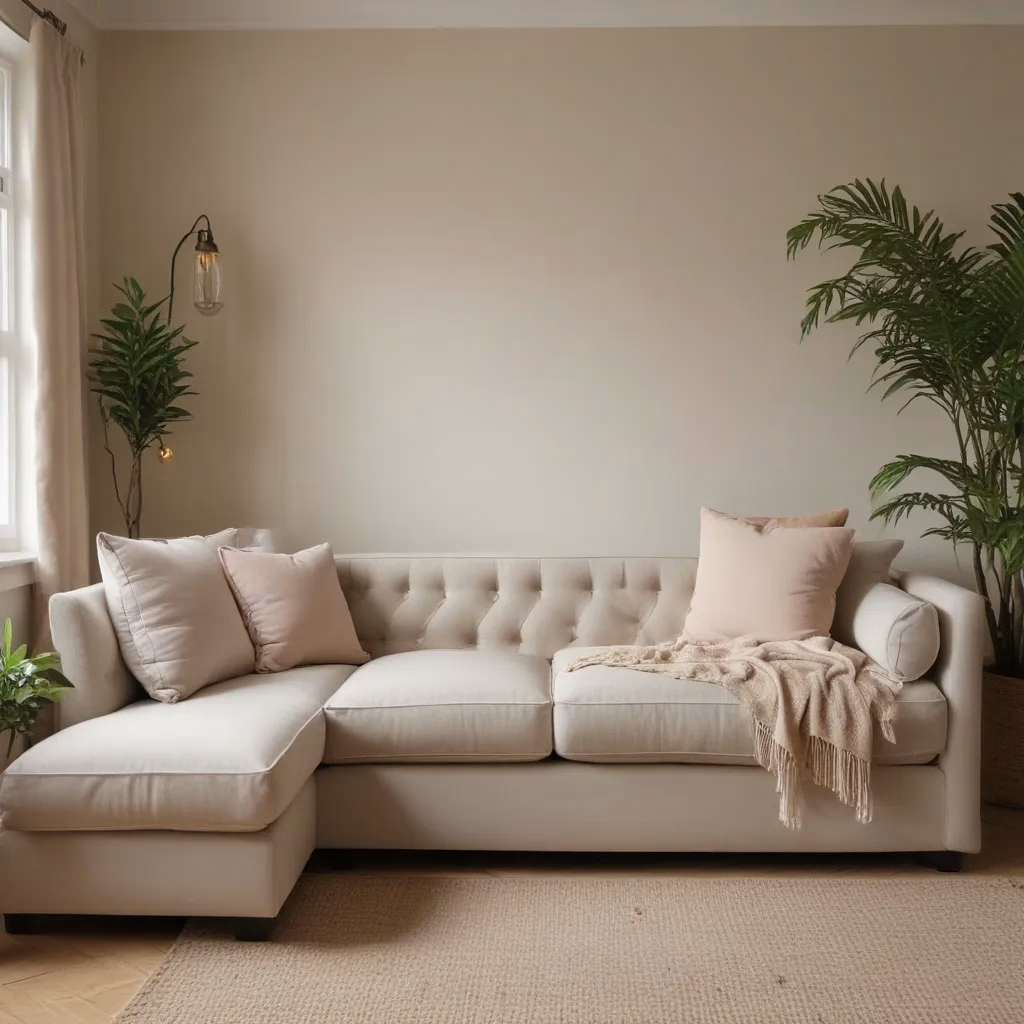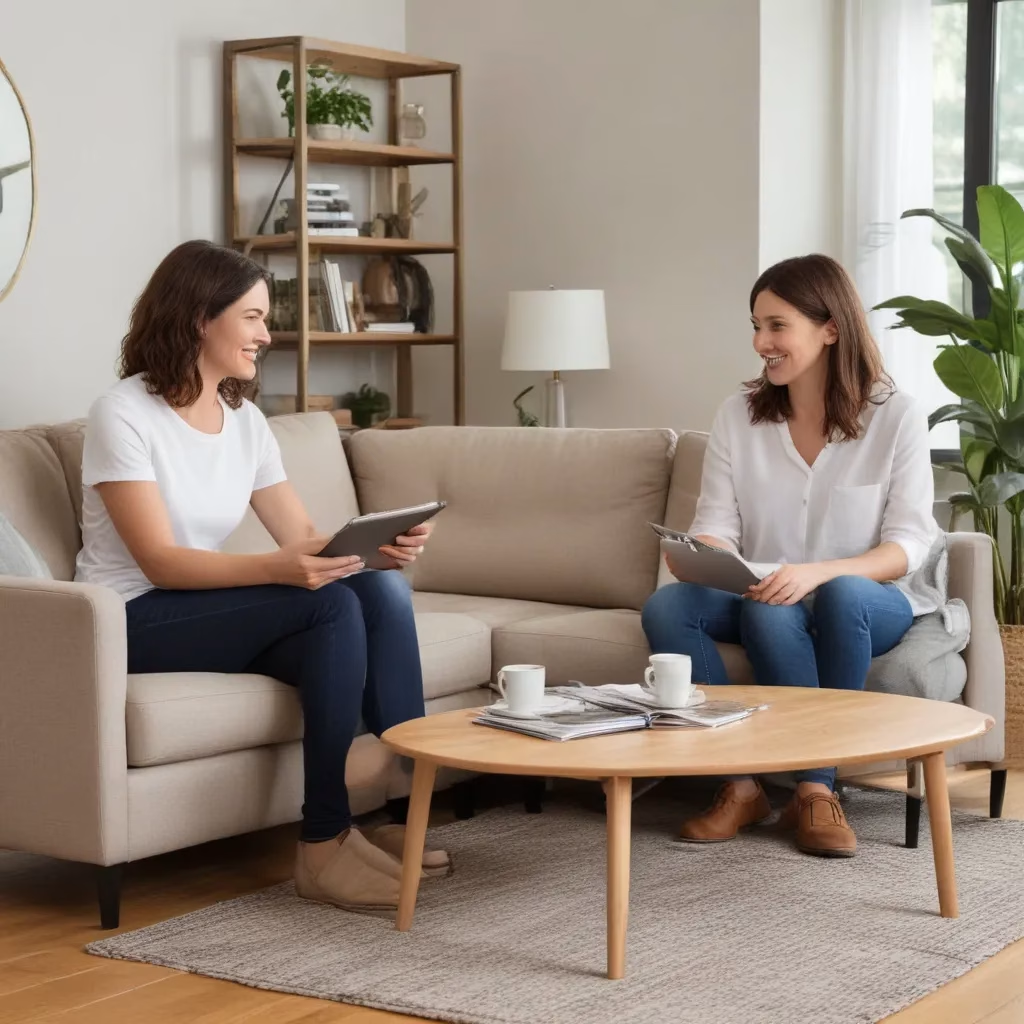
Open-concept living is a popular design choice that has transformed modern homes, blending multiple living spaces into one expansive, airy environment. We learned this the hard way… By removing walls and barriers, this layout enhances natural light, improves traffic flow, and fosters a greater sense of togetherness. However, designing a cohesive furniture scheme for an open-plan space can present unique challenges.
Now, this might seem counterintuitive…
As an experienced furniture consultant and interior design writer, I’m excited to share practical strategies for curating a harmonious and visually appealing furniture arrangement in your open-concept living area. From selecting the right upholstery materials to arranging your sofa, armchairs, and accent pieces, this guide will help you create a beautifully coordinated space that seamlessly flows from one zone to the next.
Fabric and Upholstery Selection
The fabrics and upholstery you choose for your furniture play a crucial role in establishing the overall aesthetic and functionality of your open-plan living space. When selecting materials, consider both the practical and visual aspects.
Upholstery Fabric Types:
Durable fabrics, such as leather, microfiber, or performance fabrics, are excellent choices for open-concept living areas. These materials can withstand heavy use and are easy to clean, making them ideal for high-traffic zones. Textured chenille and linen upholstery also work well, adding visual interest and a softer, more inviting ambiance.
Fabric Durability and Maintenance:
In an open-plan layout, furniture is often exposed to more wear and tear due to increased usage and foot traffic. Look for fabrics with a high Martindale rub count, which measures a fabric’s resistance to abrasion. This ensures your upholstery can withstand the demands of everyday life. Additionally, opt for stain-resistant and easy-to-clean materials to maintain the visual appeal of your furniture over time.
Colour and Pattern Considerations:
When choosing upholstery colours and patterns, consider how they will interact with the rest of your open-plan décor. Opt for a cohesive colour palette that ties the different living zones together, using neutral tones as a foundation and accent colours to add visual interest. Incorporating complementary patterns and textures can also contribute to a harmonious and visually stimulating environment.
Living Room Layout Tips
Arranging your furniture in an open-plan setting requires a strategic approach to double-check that the space remains functional and aesthetically pleasing. By thoughtfully positioning your sofa, armchairs, and other pieces, you can create distinct living zones while maintaining a sense of openness.
Furniture Arrangement Strategies:
Begin by identifying the focal point of your open-plan space, such as a fireplace or a stunning view. Position your sofa and armchairs to face this focal point, creating a natural conversation area. Use area rugs to define the living room zone and provide a sense of grounding. Strategically place end tables and coffee tables to facilitate easy movement and access to various living areas.
Balancing Function and Aesthetics:
In an open-plan layout, it’s essential to strike a balance between functional considerations and visual harmony. double-check that there is ample walkway space between furniture pieces to maintain a fluid flow throughout the area. Arrange your furniture in a way that encourages interaction and conversation, while also allowing for privacy and individual activities.
Maximizing Space Utilization:
Open-concept spaces can sometimes feel vast and overwhelming. To make the most of your square footage, consider multi-purpose furniture, such as ottomans with hidden storage or sectional sofas that can be configured in various ways. Incorporate shelving units or bookcases to define different zones and provide additional storage without compromising the open feel.
Sofa Cleaning & Maintenance
Maintaining the cleanliness and longevity of your sofa is essential in an open-plan living area, where it’s likely to see frequent use. Proper care and cleaning techniques can help keep your upholstery looking its best.
Spot Cleaning Techniques:
For quick spills or stains, act quickly with a mild soap and cool water. Blot the affected area gently, being careful not to rub or scrub, as this can spread the stain. If the stain persists, consult your sofa’s care instructions or seek the guidance of a professional upholstery cleaner.
Upholstery Deep Cleaning:
Periodically, your sofa may require a more thorough cleaning. Use a fabric-safe vacuum attachment to remove dust and debris from the surface. For a deeper clean, consider hiring a professional upholstery cleaning service that can safely and effectively clean your sofa’s fabric without causing any damage.
Preventative Maintenance:
To extend the life of your sofa, implement a regular maintenance routine. Rotate and fluff the cushions regularly to prevent uneven wear. Protect your sofa from direct sunlight, which can fade the fabric over time. Additionally, consider using sofa covers or throws to shield the upholstery from daily wear and tear.
Styling for Comfort & Aesthetics
In an open-plan living space, your furniture arrangement and décor choices work together to create a harmonious and inviting environment. By carefully layering textures, patterns, and accent pieces, you can achieve a visually balanced and comfortable space.
Layering Textures and Patterns:
Incorporate a variety of textures, such as plush velvet, linen, and leather, to add depth and visual interest to your open-plan living area. Juxtapose patterned throw pillows, textured area rugs, and smooth wooden or metal accents to create a visually stimulating space.
Incorporating Accent Pieces:
Introduce statement pieces, like a bold armchair or a unique coffee table, to anchor specific zones within your open-plan layout. These accent elements can help differentiate the living room from the dining or kitchen areas, while also contributing to the overall aesthetic.
Achieving Visual Balance:
Balance is key in an open-concept design. double-check that that the scale and placement of your furniture create a harmonious flow throughout the space. For example, a large sectional sofa can be balanced by a pair of smaller armchairs or accent chairs. Vary the heights of your décor items, such as floor lamps, side tables, and decorative accessories, to add visual interest and prevent a flat, uninteresting appearance.
Sofa Selection and Sizing
Choosing the right sofa is crucial in an open-plan layout, as it often serves as the focal point of the living room area. Consider the size, style, and comfort features to double-check that your new sofa seamlessly integrates into your open-concept space.
Measuring for the Right Fit:
Accurately measure the dimensions of your open-plan living area to determine the appropriate size for your sofa. Allow for ample walkway space around the furniture and double-check that the sofa’s scale complements the overall room size. Measure doorways and hallways to double-check that the sofa can be easily maneuvered into the space.
Sofa Style and Design Trends:
Opt for a sofa design that complements the overall aesthetic of your open-plan layout. Modular or sectional configurations are popular choices, as they offer flexibility and can be arranged to suit the space. Contemporary low-profile sofas with clean lines also work well in open-concept environments, creating a sense of visual lightness.
Comfort and Support Features:
In an open-plan setting, where the sofa may be used for extended periods, prioritize comfort and support. Look for sofas with high-density foam or memory foam cushions that provide ample lumbar support. Reclining or power-adjustable features can also enhance the overall comfort level.
Complementary Furnishings
To achieve a harmonious and visually appealing open-plan living space, it’s essential to carefully select furnishings that complement your sofa and enhance the overall design.
Coordinating Armchairs and Loveseats:
Choose armchairs and loveseats that echo the style and materials of your sofa, creating a cohesive look. Consider matching or complementary upholstery to tie the seating area together.
Integrating Coffee Tables and End Tables:
Incorporate coffee tables and end tables that coordinate with the aesthetic of your sofa and other furnishings. Glass, wood, and metal are all versatile materials that can work well in open-plan layouts. double-check that the scale and proportion of these pieces balance the room’s proportions.
Selecting Rugs and Lighting:
Anchor your open-plan living area with a large area rug that defines the space and ties the various furniture pieces together. Complement the rug with thoughtful lighting, such as pendant lights, floor lamps, and recessed lighting, to create a warm and inviting ambiance.
Storage and Organization
In an open-concept layout, where the living room, dining area, and kitchen often converge, efficient storage and organization are crucial to maintaining a clutter-free and visually appealing space.
Utilizing Ottomans and Sectionals:
Multifunctional furniture, like storage ottomans and sectional sofas with built-in storage, can provide hidden storage solutions while seamlessly integrating into your open-plan design.
Incorporating Shelving and Bookcases:
Strategically placed shelving units and bookcases can help define different zones within your open-plan space, while also offering valuable storage for books, accessories, and decorative items.
Decluttering and Minimalist Approach:
Embrace a minimalist approach to your open-plan décor, keeping surfaces and walkways clear of clutter. Regularly assess and declutter your living space to maintain a clean, organized, and visually harmonious environment.
Versatile Furnishing Solutions
In open-concept living, flexibility and adaptability are key. Explore furnishing options that can accommodate a range of activities and adapt to changing needs over time.
Modular Seating Configurations:
Modular sofas and sectionals allow you to rearrange the layout of your living area, enabling you to adapt the space for various functions, from intimate gatherings to large family events.
Convertible and Multi-Purpose Pieces:
Incorporate convertible furniture, such as sleeper sofas or ottomans with hidden storage, to accommodate overnight guests or provide additional seating when needed. Multi-purpose pieces like nesting tables or coffee tables with hidden storage can also help maximize the functionality of your open-plan living space.
Adaptable Furniture for Flexibility:
Look for versatile furniture that can seamlessly transition between different zones in your open-plan layout. For example, mobile storage units or rolling carts can serve as both kitchen islands and coffee table alternatives, depending on your needs.
By carefully curating your furniture scheme and incorporating strategic design elements, you can create a harmonious and visually captivating open-plan living space that caters to your lifestyle and aesthetic preferences. Remember to keep an open mind, experiment with different arrangements, and don’t be afraid to explore the endless possibilities that open-concept living has to offer. For more inspiration and advice, visit SofaSpectacular.co.uk to explore our extensive collection of high-quality sofas and living room furnishings.
Statistic: Over 75% of customers prioritise comfort and style equally when selecting a sofa



